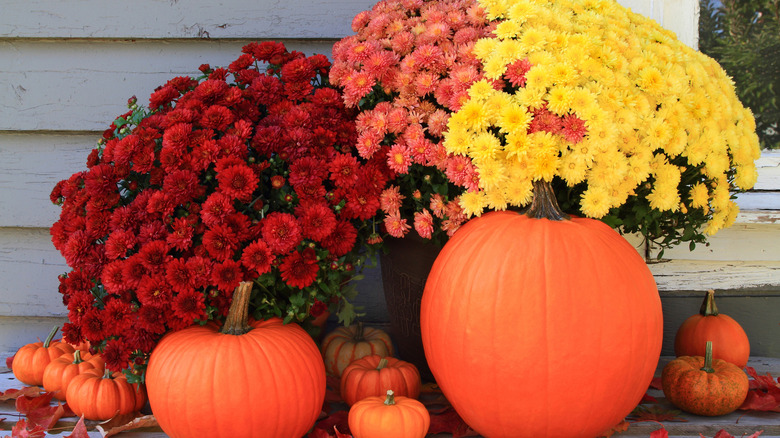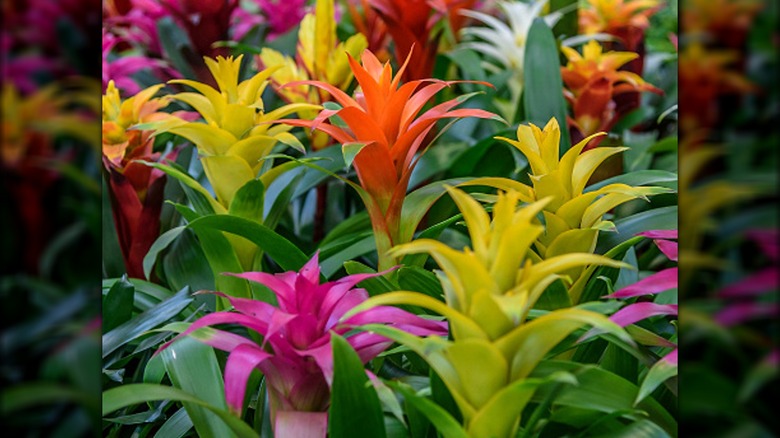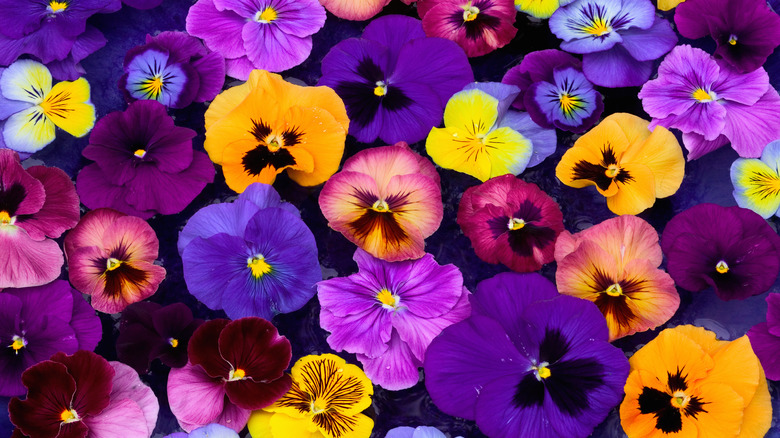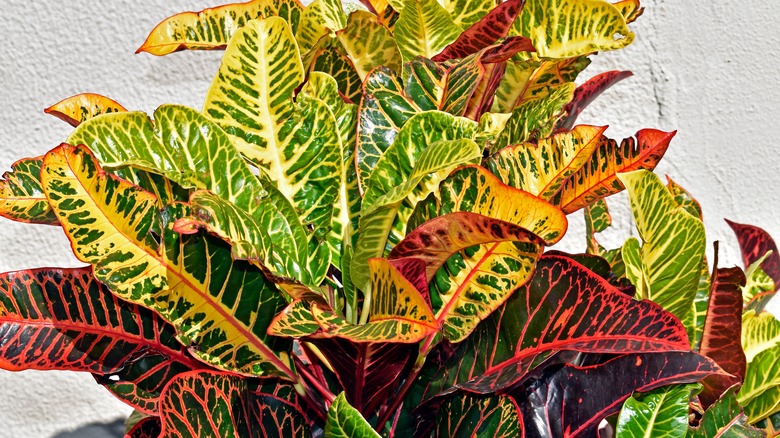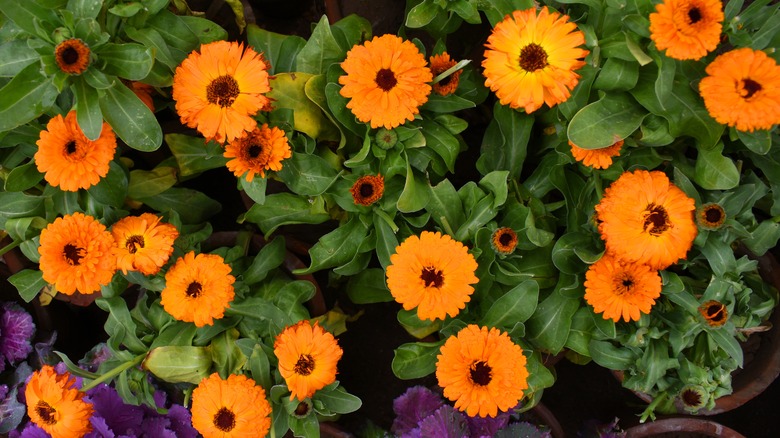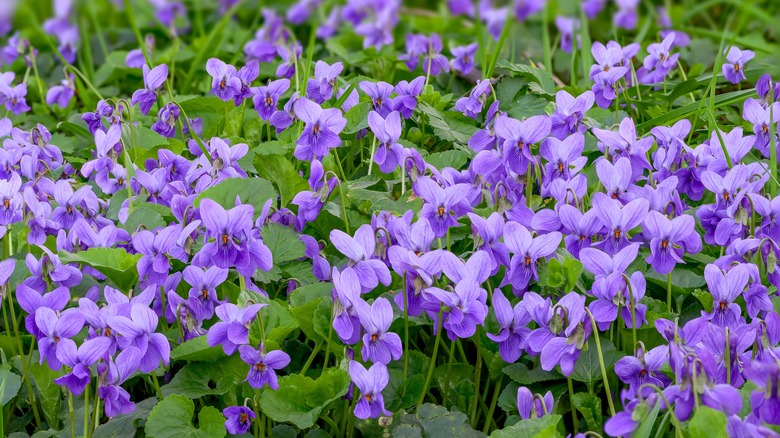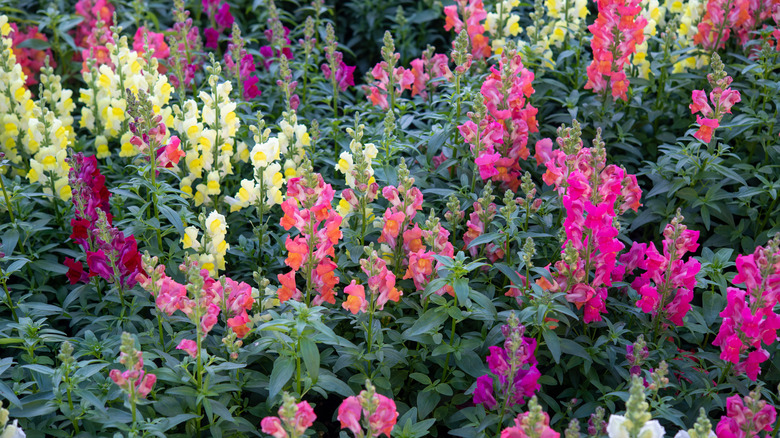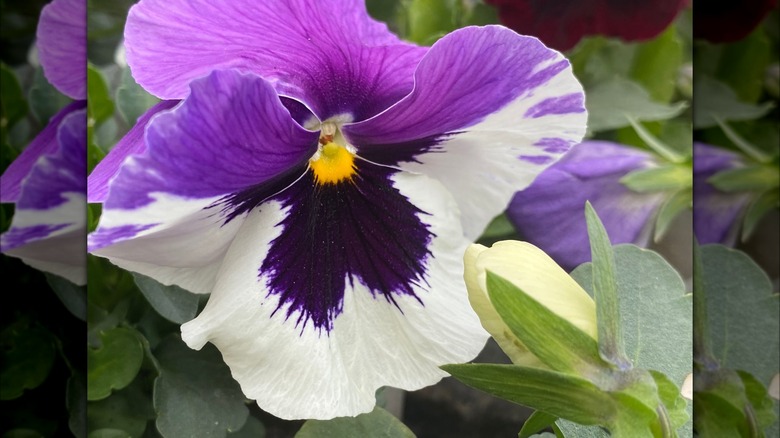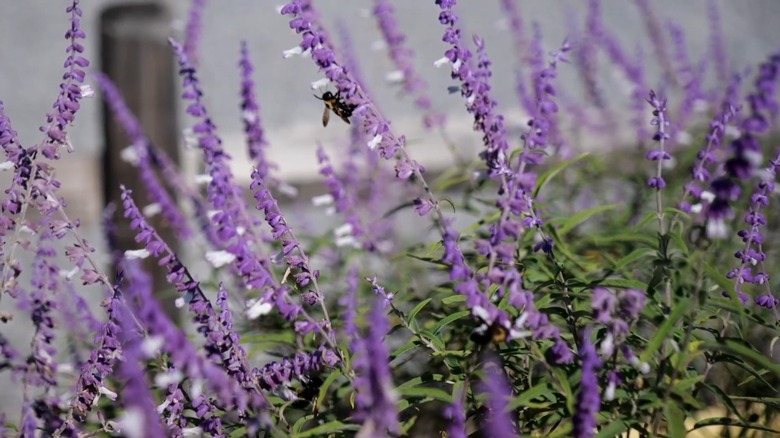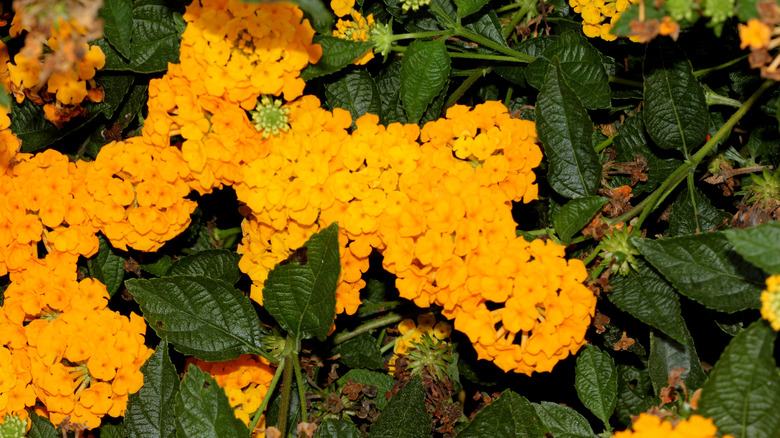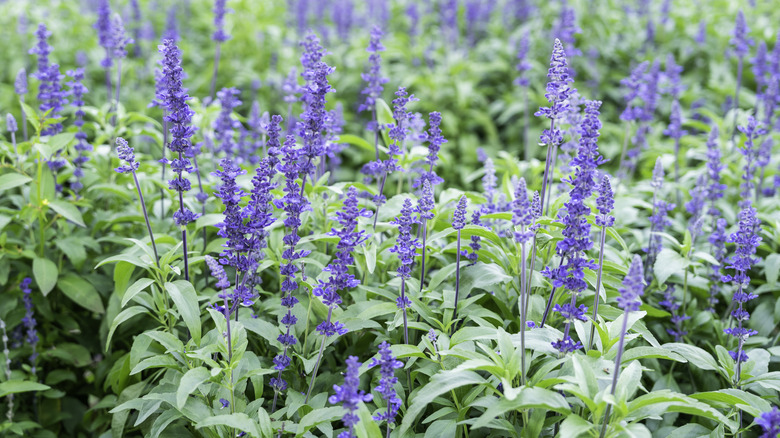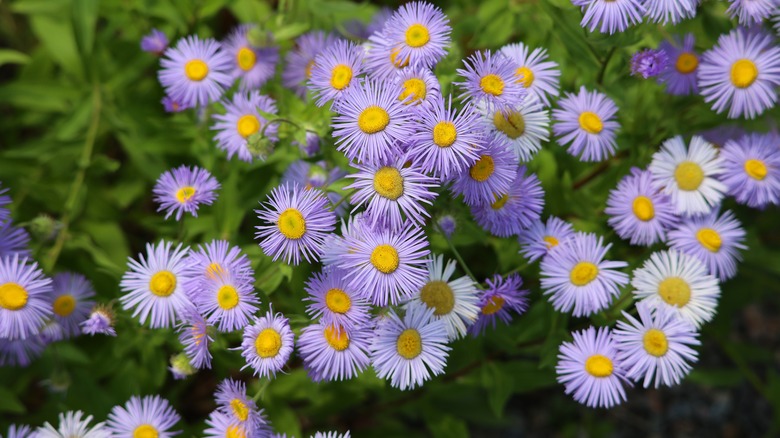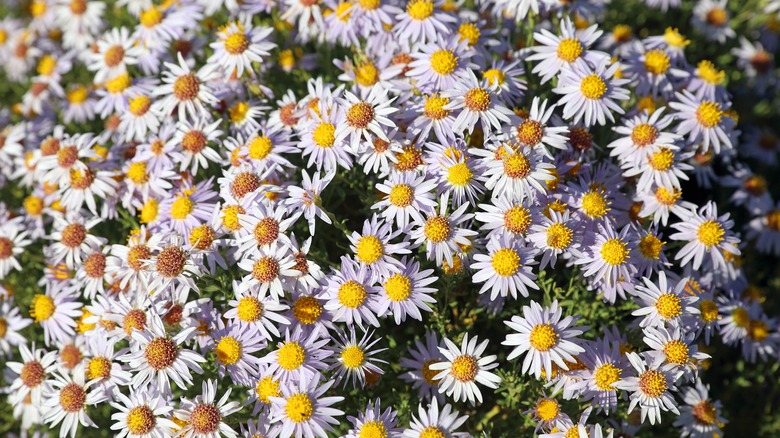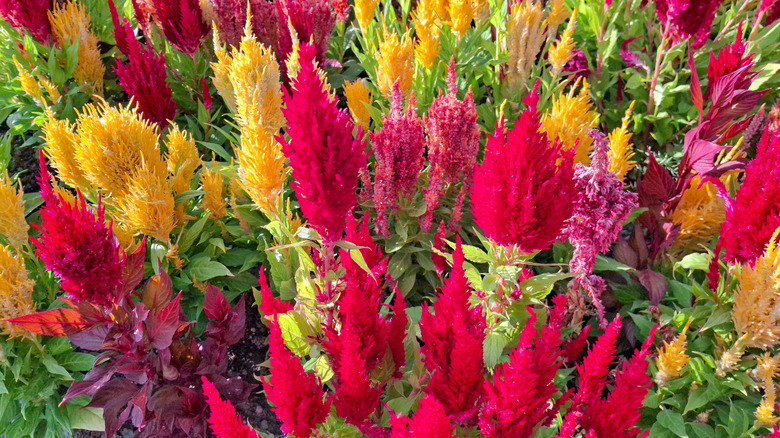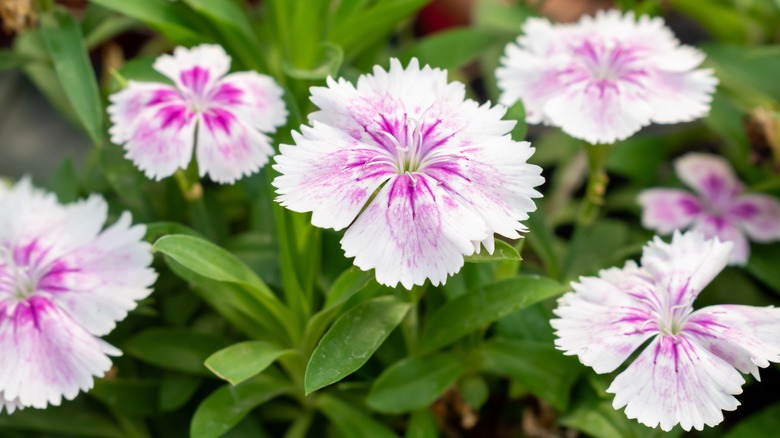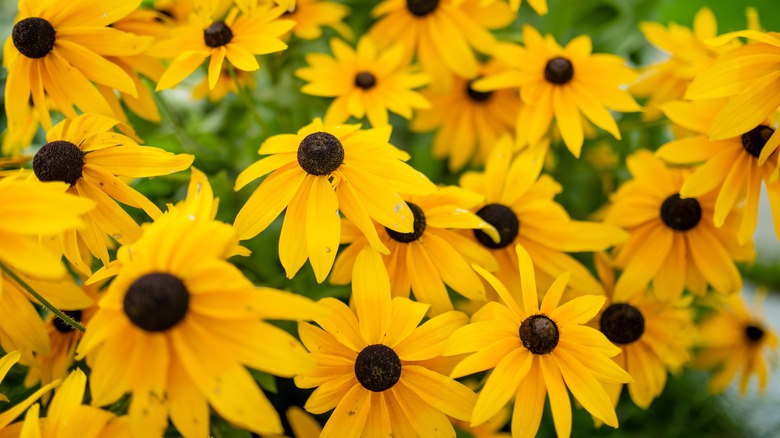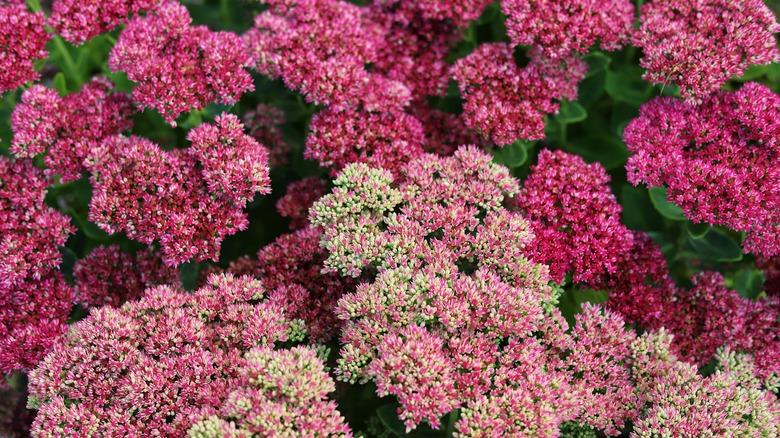16 Gorgeous Fall Planter Flowers To Consider If You're Tired Of Mums
With summer heat swapping hands with chilly weather, green leaves donning bronze overcoats, apples becoming ripe for pickings, and migratory birds readying to fly offshore, you know 'tis the season of fall. This also means soon, every porch, deck, and patio in your neighborhood will be teeming with mums: pumpkin mums, butterscotch mums, red mums — as if other flowering annuals and perennials weren't clued in on the seasonal transition. But nothing can be farther from the truth, and you only need to explore the raging-hot end-of-season sales running at your nearest nurseries and garden centers to know that. Mums aside, there are hosts of flowering plants keen on taking space in your fall planters, bringing in highlights of orange, yellow, and purple. Pansies, calendulas, violas, asters, and salvias are some such fall planter flowers worth consideration, as we highlight below.
But before going around personalizing your container recipe, ensure you bear the thriller, filler, and spiller criteria in mind. While the below-mentioned flowers would ideally count as thrillers (focal points of the planter) or spillers (if they trail down the pot), they must be complemented by decorative greenery or herbs (fillers) such as ornamental kales and cabbage, ornamental peppers, Swiss chard, sweet potato vines, and their ilk. Naturally, you'd want to match their growth requirements for an aesthetic balance. That being said, protect your fall planters with thin blankets when night temperatures drop below zero degrees so that their blooms persist for longer.
1. Bromeliads
Available in scores of colors and forms, Bromeliads hold the key to infusing your fall planter with an exotic tropical charm, though you can prime it up for Halloween by spending on orange varieties like Aechmea blanchetiana. They offer long-lasting blooms and variegated foliage even when sited in low-light conditions, but ensure their potting mixes drain well, lest they rot — cymbidium orchid mixes are ideal. As bromeliads tend to hold water, you might've to kick mosquitoes out of your patio space unless you hose them weekly. Bring them indoors when the weather turns frosty, or grow as houseplants.
2. Pansies
Heeling close to mums in fall planter popularity, pansies (Viola x wittrockiana) continue to bloom prolifically through the winters so long they remain frost-free. They offer quite the color and pattern range, from streaked pastels and deep violets to burnished gold and mottled orange. However, you must be careful about your selection. Pansies, especially the ones on sale, don't last long on the garden shelves and are prone to turning spindly or, worse, sprouting rotting roots, lowering their performance. So, look for smaller plants with scarce blooms and pop them out to confirm their roots are white.
3. Crotons
Crotons' (Codiaeum variegatum) limited cold hardiness (zones 11 to 12) hasn't dimmed their popularity as fall plantings or accompaniments to mums you swore off last year. After all, their leathery foliage, available in variegated pinks, yellows, purples, and reds, is drop-dead stunning and ages like wine, sometimes birthing new sports. Their stellate flower explosion, however, won't transpire before spring. Give them partial shade — dulling foliage will indicate excessive sunlight — and move the planters indoors before frost. However, be wary of their sap, as it's irritating, toxic on ingestion, and can stain. Couple Zanzibar and Petra varieties for a textural contrast.
4. Calendulas
Calendula or pot marigold (Calendula officinalis) is an edible flower that'll attract bees and pollinators to your fall planter in cooler climates, occasionally extending their delish beauty to wee winter days. Cousins to asters and acting that part, they mostly add touches of yellows and orange to pots, or at least popular cultivars like 'Citrus Cocktail' and 'Orange Porcupine' do. But you'll find plenty of multi-colored options as well like 'Bon Bon' and 'Dwarf Gem' weaving apricots in their petals. Harvest the leaves for salad garnishes and save some seeds for next year to make this nursery spending worth it.
5. Violas
Viola or violets might not turn out blooms as big as their hybrid children (read: pansies), but they add a pop of fall color like no other and hold it for extended durations, even with limited deadheading. Mostly, you'll come across Johnny jump-ups (Viola tricolor), a cool season annual tasked with feeding pollinators come spring. Make sure they receive morning sun, well-draining soils, and water when the topsoil dries out. Liberally pepper the planter with willow or birch twigs for auxiliary height and wintery aesthetics. Trim out injured leaves and remove seeds to keep your violas vigorous.
6. Snapdragons
Festooned with dragon snouts (or so allege the growers about its flower spikes) in deep shades of yellow, lavender, burgundy, and orange, snapdragons (Antirrhinum majus) are another container favorite. These butterfly- and hummingbird-friendly plants bloom during autumn, breaking temporarily during peak winter only to resume in the spring. They require lots of organic content in their substrate and part-to-full sunlight. Unlike most annuals, you mustn't lower your watering frequency for snapdragons in cold months. Look for 'Candy Showers' if you want your plant to cascade down the planter or any medium-sized variety (think 'Candy Tops') for hardier cold tolerance.
7. Panolas
Wedding the best parts of violas and pansies, like prolific flowering, bigger blooms, and superior cold resilience (southern winter, who?), bore another cool season hybrid: panolas. They, too, support varied shades of yellow, purple, and true blues. The bi-colored (violet and white) 'Beaconsfield' variety looks particularly becoming. Ideally, position their fall planters in an area receiving at least six hours of sunlight. However, when that's not possible, filtered light will work, too, albeit at the cost of fewer blooms. Watering won't be necessary if your yard receives winter rains. Lace the foliage with cayenne pepper to prevent herbivory.
8. Mexican bush sage
Harmonize your lantanas and calendulas with the velvety beauty of Mexican bush sage (Salvia leucantha), a herbaceous perennial winter hardy in USDA zones 8 to 10. It's one way to attract a horde of bees and butterflies and a few territorial hummingbirds for the next six weeks until the fall-blooming purple-white spikes (rarely pink) are completely spent. While they thrive in six hours of direct sun, they prefer the exposure closer to the afternoon, lest their leaves scorch. Keep the soils moist and shear the dead foliage after the hard frost outdoors to tidy the plant.
9. Lantanas
To retain a semblance of bright summers in your fall containers, consider adding lantanas. They're easy to maintain and can be relegated to spillers, if not thrillers, depending on the selected variety. But know that the vibrant hummingbird-attracting flower most nurseries sell belongs to the invasive Lantana camara variety. So, deliberately look for sterile cultivars such as 'Gold Mound', 'New Gold," or 'Luscious Royale Red Zone' because they're unlikely to spread. Patriot, Sunburst, and Bloomify series also offer several colorful infertile options. Match the beauties with sweet potato vines or coleus for a fuller look.
10. Salvia 'Indigo spires'
Another sage variety that's earned the benediction of bumblebees, hummingbirds, and butterflies is Salvia 'Indigo spires,' making it a catch in fall planters. From summer's end, its 4-foot wide mound teems with shadowy violet flowers right through frost without any hiccups. To keep it happy, maintain full sun exposure and ensure the soil drains well. In zones 7 and lower, mulch the plant if outdoors, or better yet, move the planter inside to ensure the sage plant returns next year. Cut back dead flower stalks and foliage for a neat appearance.
11. Asters
Asters, typically New England asters (Symphyotrichum novae-angliae), New York asters (Symphyotrichum novi-belgii), and Frikart's aster (Aster x frikartii), effortlessly translate to the role of a filler in fall planters and are often touted as replacements for mums. All you need to focus on is picking the right palette — purples, pinks, or blues — and the dimensions, as they can be both short and tall, with the latter requiring staking. Most varieties settle for part-to-full sun exposure and rich soils. Positioning them on your porch or deck will ensure a first-seat view of pollinating bees and butterflies hard at work.
12. Eastern doll's daisy
If you want a wild and unkempt look for your fall containers, Eastern doll's daisy or false aster (Boltonia asteroides) is your flower, but keep to compact cultivars. Options include white-flowering 'Snowbank' and violet-blooming 'Jim Crockett' — they don't send out as many rhizomes either. Keep the soils moist for a prolific show. But cut back on water if your false asters grow unwieldy, as dry soils in tandem with full (or even partial) sun exposure help restrict vertical growth. Pair them off with asters and goldenrods, and watch for powdery mildew.
13. Cockscomb
Supporting a wide range of flowery tints, such as pink, white, and yellow, and habits (compact and tall) are cockscomb (Celosia) plants, and they look blazingly spectacular in fall planters with their flame-shaped inflorescence. Their foliage is equally pretty, assuming chartreuse to burgundy tones. Team them with other sun-loving perennials like zinnias or the evergreen "spiller" favorite sweet potato vine. Remember, proper water drainage is a non-negotiable for celosia, or their roots will rot. But if improving the substrate with compost isn't an option, your plants will be better off with infrequent watering than standing on wet feet.
14. Dianthus
Familiar to most gardeners as bedding plants, dianthus (or pinks) will work for planters, too, if you plan it right and get them in October. Their frilly, pink-lilac flowers are quite bewitching, or they wouldn't be thronged by butterflies and bees. They also envelop the space with a spicy fragrance, sometimes right through the winter, until temperatures rise again. However, you'll need gloves before touching their petals to avoid dermatitis. Unless you're okay with an unkempt cottage look, limit yourself to dwarf varieties. You can also play them off with annuals like dusty miller or sweet alyssum for a more structured look.
15. Black-eyed Susan
Another popular fall planter flower is the black-eyed Susan (Rudbeckia Hirta), especially the 'Autumn Colors' cultivar. Closely related Rudbeckia fulgida sullivantii 'Goldsturm' is also ubiquitous at stores around this time. Rudbeckia's yellow or orange ray florets add a summery touch to containers with scores of butterflies and pollinators for delightful company. Give them full-to-part sun and moist but fast-draining soils. Removing discolored flowers will prolong the season. Don't bother saving the seeds if your variety is a hybrid, as they're unlikely to replicate the bred genes; divide the plants instead — group Susans with coleus, coneflowers, or sedums.
16. Sedum
Sedums or stonecrops are cheekily crowned as the ultimate low-maintenance plants because they thrive on neglect and have little need for watering. But that's not why you want them in your fall planters. Instead, it's for their pretty pink, yellow, or white flowers that keep bursting out up until frost. Naturally, you'll need to look for taller cultivars, as the dwarf varieties are more foliage-heavy and lovely nonetheless. 'Autumn Joy' and 'Autumn Fire' remain timeless favorites with gardeners, bees, and butterflies. Birds appreciate them for winter cover, assuming they can be winterized outdoors in your zone.
